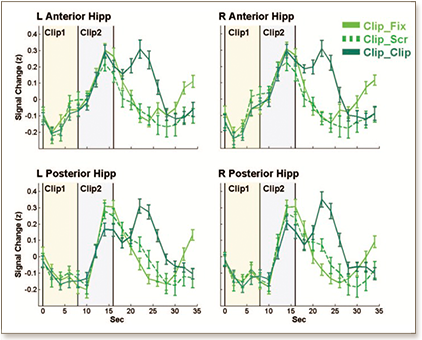 Experience leaves a trace in the nervous system through plasticity. However, the exact meaning of the mnesic trace is poorly defined in current literature. This article provides ahistorical review of the term trace in neuroscience and psychoanalysis literature, to highlight two relevant aspects: the diachronic and the semantic dimensions. There has been a general interest in diachrony, or a form of evolution of the trace, but its indissociable semantic dimension remains partially disregarded. Although frequently implied, the diachronic and semantic dimensions of the trace are rarely clearly articulated. We situate this discussion into the classical opposition of syntax, or rules of inscription of the trace inthe nervous system, and semantics, or the content of the trace, which takes into consideration the attempt of the human being to build coherence. A general observation is that the study of the term trace follows trends of the thought of the given epoch. This historical analysis also reveals the decay of the idea that the trace is reliable to the experience. From the articulation between neurosciences and psychoanalysis in a historicalperspective, this review shows that the trend is to consider trace as a production of the subject, resulting in a permanent rewriting in an attempt to give meaning to the experience. This trend is becoming increasingly evident in light of recent research in neurosciences and psychoanalysis.
Experience leaves a trace in the nervous system through plasticity. However, the exact meaning of the mnesic trace is poorly defined in current literature. This article provides ahistorical review of the term trace in neuroscience and psychoanalysis literature, to highlight two relevant aspects: the diachronic and the semantic dimensions. There has been a general interest in diachrony, or a form of evolution of the trace, but its indissociable semantic dimension remains partially disregarded. Although frequently implied, the diachronic and semantic dimensions of the trace are rarely clearly articulated. We situate this discussion into the classical opposition of syntax, or rules of inscription of the trace inthe nervous system, and semantics, or the content of the trace, which takes into consideration the attempt of the human being to build coherence. A general observation is that the study of the term trace follows trends of the thought of the given epoch. This historical analysis also reveals the decay of the idea that the trace is reliable to the experience. From the articulation between neurosciences and psychoanalysis in a historicalperspective, this review shows that the trend is to consider trace as a production of the subject, resulting in a permanent rewriting in an attempt to give meaning to the experience. This trend is becoming increasingly evident in light of recent research in neurosciences and psychoanalysis.